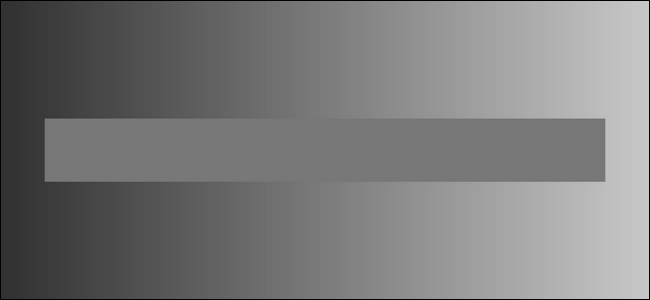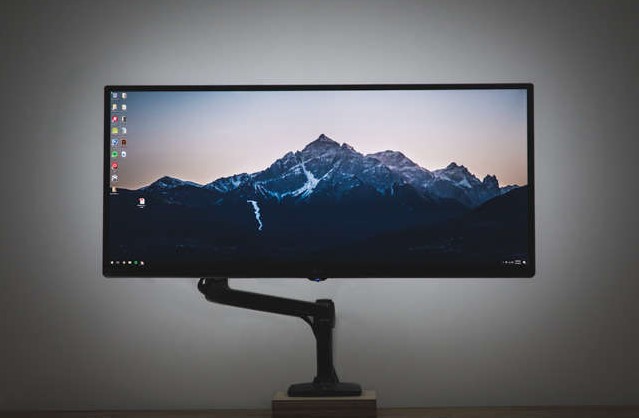What is Bias Lighting and Do You Need It?
We’ve seen a lot of targeted ads lately that feature bias lighting. If we are seeing them, so are you. They usually look like fireworks going off behind a flat panel display. As the light on the screen moves toward the edge, a similar shade light illuminates behind the screen. It’s very dramatic and compelling. It is also complete garbage. Don’t buy that crap.
What Bias Lighting is NOT

What you see above is not bias lighting. In the company’s favor, they don’t call it such. Instead, they call it LED backlights. There are a number of systems out there and the easiest to set up ones come with a camera. It used to be you had to plug your HDMI cable into a splitter to use this color-matching function. The camera allows the system to see what is on the screen to match with the backlights. The best versions come from Phillips, don’t use cameras, and are a lot more expensive.
What Bias Lighting Is
The color-matching may look cool, and you may even desire it, but it is NOT bias lighting. Bias lights are meant to reduce eye strain and enhance perceived contrast by adding a slight amount of neutral light around the projected image. Let’s take these one at a time.
Eye Strain

We’ve all had the experience of being at a movie theater and having the movie go from a dark scene to an extremely bright one. What do you do? Squint. That’s because the movie theater is extremely dark and the image is likely bigger than the one you have at your home (we can help with that). That change from dark to extremely bright can cause headaches, dry or watery eyes, or general discomfort. These are symptoms of eye strain. Your eyes are focusing on a very bright image in a very dark room. You’ve probably experienced this before. Have you been working at a computer for a long time and had to take a break to rub your eyes? Eye strain.
Bias lighting reduces eye strain by keeping your iris from opening too wide during the dark scenes. Having a little bit of light up front without shining additional light onto the screen keeps our eyes from having to adjust too much during extremely dark scenes. This will (hopefully) eliminate the squinting that happens during those rapid brightness shifts.
Enhancing Contrast
When you look at a bright screen in a blacked-out room, your eyes don’t take the average of the brightness on the screen, it averages everything in your field of view. If the room is darker than the black levels of your screen (which is often the case with LCD TVs or projectors), then the “black” portions of your screen actually appear dark grey. Bias lighting can help with that.

Check out the optical illusion above. The bar in the center is the same color all the way across. On the left side, the bar looks lighter. On the left, darker. The left side of the center bar is the black levels of your display when the room is blacked out. The right is when a bias light is applied. A little bit of bias lighting can make your blacks appear much blacker without having to upgrade your display to something that can actually perform better.
How to Properly Integrate Bias Lighting
A bias light does not have to be a specific type of bulb. We’ve seen light strips used, single floodlights, and small LED puck lights. It doesn’t matter. What is important is that the light comes from behind your screen and radiates around all edges of your screen. If you have a large projection screen, LED strip lights make the most sense. If your TV is in a corner and the walls are not very close to the back of the TV, you may opt for multiple bias lights to fill the area.

Here we have the same image with no bias lighting on the left and a bias light on the right. Note the bottom of the screen in particular. The black levels on the left generally look grey while the blacks on the right look much inkier. Note that the performance of the displays did not change. It is only our perception of the black levels.
What is the Perfect Color for Bias Lighting?
Reading user reviews, you’ll find a lot of people that will have a lot of opinions about the proper shade for bias lighting. The reality is that there is a perfect color, and it isn’t all that hard to find. 6500k. You can’t look at the name of the bulb, you need to look at the color temperature. Some will say cool white or daylight. As long as the bulbs are 6500k, you’ve got the right one. Why 6500K?
6500K is the industry standard. The editing booths where the content you are watching was edited, had 6500k bias lighting. The bulbs inside your TV are calibrated to 6500K. If someone tells you that they prefer a different color, that is fine. That is their preference. But the “right” bias light is 6500k. End of story.
Do You Need Bias Lighting?
We can’t tell you that. Are you experiencing eye strain? Do you wish your black levels looked a little better but don’t want to pony up for that OLED? Bias lighting can make a big difference in your viewing experience. There are plenty of options on Amazon and other places for DIYers that just want to add the lights, and the pre-packaged solutions aren’t really all that more expensive.
Do you have bias lighting? Let us know how they work for you in the comments!



I love biaslighting.com myself. Every one of their products is basically ideal for bias lighting – 6500K, dimmable so it doesn’t overpower the display, high-CRI for natural look, and comes with everything needed to install. I installed their previous gen on my Samsung Q80R and enjoyed it. Plus the chat / support is very knowledgeable & helpful.
I’ve been researching LED strips and bias lighting for the past week. I finally ran across your article this morning and it tells me exactly what I’ve been wanting to know (should I get the fancy color matching back lights or just the simple white ones). Thank for making this very straight forward with your sections and the images/examples you used.
No problem. Thanks for the comment!